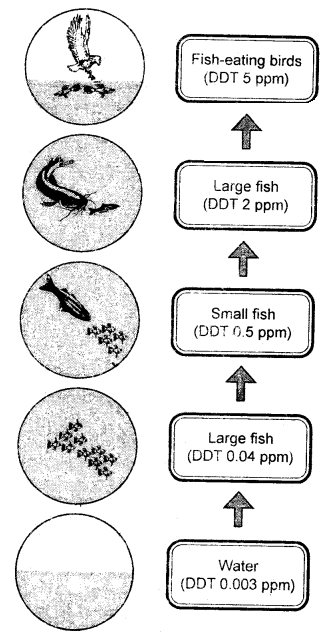By going through these CBSE Class 12 Biology Notes Chapter 16 Environmental Issues, students can recall all the concepts quickly.
Environmental Issues Notes Class 12 Biology Chapter 16
→ An increase in the human population is exerting tremendous pressure on our natural resources and is also contributing to pollution of air, water, and soil.
→ Pollution is referred to any undesirable change in physical, chemical, or biological characteristics of air, land, water, or soil. The agents that bring about such undesirable change are called pollutants. To control environmental pollution, the Government of India has passed the Environmental (Protection) Act, 1986. This Act is to protect the quality of the environment.
→ Air pollution primarily results from the burning of fossil fuel, e.g., coal and petroleum, in industries and in automobiles. Air pollution is harmful to both animals and plants. Strict measures should be taken to keep our air clean.
→ The most common source of pollution of water bodies is domestic sewage. It reduces dissolved oxygen but increases biochemical oxygen demand of receiving water.
→ Domestic sewage is rich in nitrogen and phosphorus. It causes eutrophication and nuisance algae bloom.
- Industrial water waste is rich in toxic chemicals such as heavy metals and organic compounds. It can harm living organisms.
- Municipal solid wastes also can create problems.
→ A few toxic substances often present in industrial wastewaters can undergo biological magnification in the aquatic food chain Increase in concentration of the toxicant at successive trophic levels refers to biomagnification. This is due to a toxic substance accumulated by an organism that cannot be metabolized or excreted, and thus, passes on the next higher trophic level. This phenomenon is well known for mercury arid DDT.

Biomagnification of DDT in an aquatic food chain
Eutrophication refers to the natural aging of a lake by the biological enrichment of its waters. Wastewater including sewage can be treated in an integrated manner, by utilizing a mix of artificial and natural processes. Disposal of hazardous waste like defunct ships, radioactive wastes, and e-wastes requires additional effort.
→ Soil pollution is due to agricultural chemicals such as pesticides, insecticides, etc., and leachates from solid wastes deposited over it.
→ The major environmental issue of global nature is the increasing greenhouse effect. It is a naturally occurring phenomenon that is responsible for heating of earth’s surface and atmosphere. Without the greenhouse effect, the average temperature at the surface of the earth would have been -18°C rather than the present average of 15°C. Increased pollution on the earth is increasing the greenhouse effect, which is warming the earth.
→ The enhanced greenhouse effect is mainly due to increased emission of carbon dioxide, methane, nitrous oxide, CFCs, and deforestation. These pollutants and depleting the ozone layer. The effects may be changed in rainfall pattern, increase in global temperature and besides deleteriously will affect living organisms. The ozone layer in the stratosphere is depleting due to the emission of CFCs. The ozone layer protects us from the harmful effects of the UV rays of the sun. The depletion of the ozone layer can increase the risk of skin cancer, mutation, and other disorders.
→ Pollution: Undesirable change in physical. chemical or biological characteristics of air, land, water, or salt.
→ Pollutants: Agents which bring undesirable change in the abiotic components of the environment.
→ CNG: Compressed Natural Gas.
→ Noise: Undesirable high level of sound.
→ BOD: Biochemical Oxygen Demand.
→ Biomagnification: Increase in the concentration of the toxicant at successive trophic levels.
→ Eutrophication: Refers to the natural aging of a lake by biological enrichment of its water.
→ Solid wastes: Everything that goes out ¡n trash.
→ Municipal solid waste: Waste from homes, offices, hospitals, schools, etc. that are collected and disposed of by the municipality.
→ Electronic wastes: Irreparable computer and other electronic goods.
→ CFCs: Chlorofluorocarbons.
→ Snow blindness: Inflammation of the cornea.
→ Soil erosion: Removal of topsoil by natural agents such as wind, water, etc.
→ Reforestation: Process of restoring a forest.